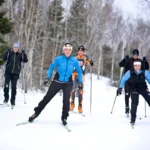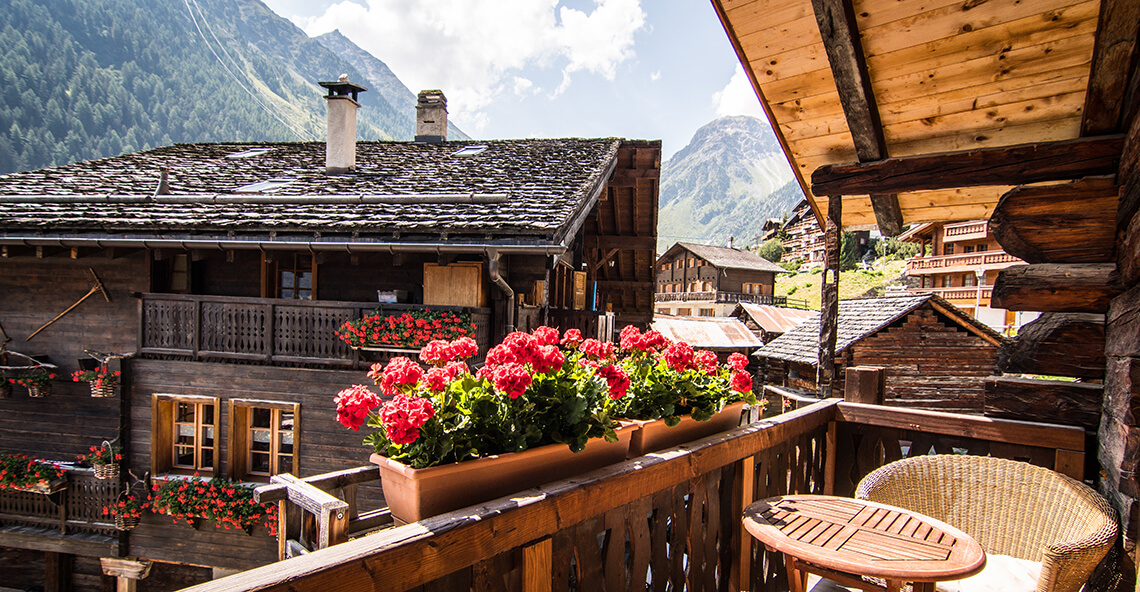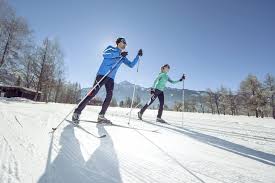
An Introduction to Roller Skiing: Part 1

For cross country skiers, the melting of the snow each Spring is a bit of a sad milestone, marking the end of the Nordic season. Sure, there’s biking and hiking to look forward to, but there is just no warm weather alternative to skiing—or is there?
As cross country skiing was coming into its own as a competitive sport in 1950’s Scandinavia, athletes realized that to maintain peak performance, a way to train during the snowless off-season was necessary. So, the roller ski was invented. Early models were a set of three-wheeled contraptions that would strap to each foot, in which socket would mimic the grip of kick wax on a skier’s classic stride. Since then, as with most 20th century sports inventions, technology has honed the roller ski to a level of precision that mimics closely the feel of the snowy version.
Roller skis today are down from three wheels to two, and can be found in skate or classic models. As with its close relative roller-blading, roller skiing requires a good hard surface underfoot; smooth pavement is ideal. You’ll often see roller skiers, helmet-adorned and striding along the shoulder of a freshly asphalted roadway with poles swinging and smiling wide.

It might be helpful to think of the requirements of roller skiing like those of cycling: helmets and reflective gear are a good idea, and anywhere you can road bike you can more or less roller ski: wide roadways, bike paths, parking lots etc. And just like learning to ride a bike, it is wise to get your roller skiing legs in a place with plenty of space and no cars—vacant parking lots are perfect. The biggest quirk of this hybrid activity that newcomers must figure out is the lack of any sort of brakes.
Roller Ski Retailers
To start, avoid downhills—flats and climbs (and perhaps the occasional walk back down) will help you gain the confidence and the on-ski agility to slow down and navigate obstacles—so that small hills will become a thrilling treat rather than hairy descent.
With a bit of practice, roller skiing can become not only the perfect off-season counterbalance for winter ski training, but a fun and invigorating workout in its own right. Like skiing, the motions get your whole body involved; and like cycling, the ground you can cover by roller ski can lead to any number of unexpected vistas and new terrains.
Check back for the second installment of this introduction to roller skiing, where we’ll get down to the nitty gritties of equipment, technique and route planning. Happy roads!
The following is the roller ski safety protocol.
- Before a skier can share the road, they must be able slow down, stop, and maneuver their skis to avoid hazards. The skier must be comfortable skiing off the road into the dirt or grass when necessary.
- An approved helmet in good condition must be worn at all times while roller skiing.
- Skiers should wear at least one of the following high-visibility articles as a way of alerting drivers:
- Shirt, safety vest, shorts, socks, helmet, water bottle holder.
- Highly-visible bike light that can be seen clearly in bright sunlight.
- Skiers must practice single-file skiing at all times.
- Limit group size. A small, single-file pack of skiers is easier for passing cars to manage than a large group.
- Know the route. Avoid or walk dangerous sections.
- Train during non-peak traffic hours, and avoid holidays and busy weekends when possible.
- Know and abide by driving laws. Use hand signals to indicate direction to both cars and fellow skiers and make eye-contact with drivers at intersections.
- When not skiing (water breaks), all skiers should be off the road. Wheels in the dirt – don’t get hurt.
- Sunglasses or clear lenses are mandatory at all times to prevent poles and debris from damaging the eyes.
- Inspect equipment often. Properly tighten nuts, and inspect wheels, shafts, poles and helmets.










































